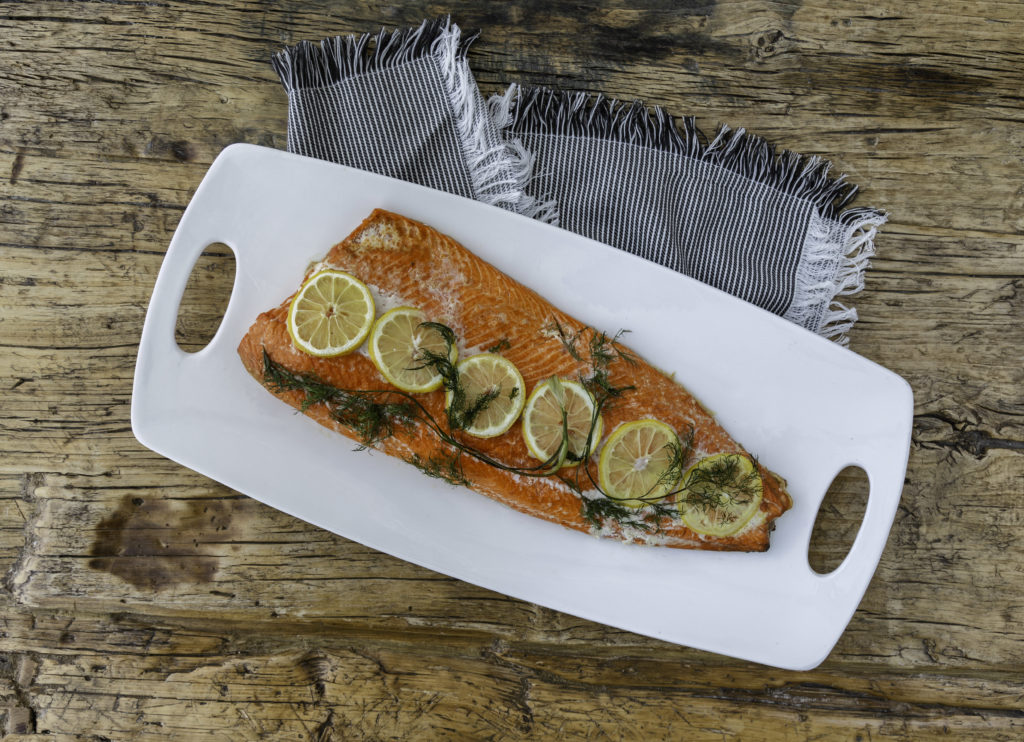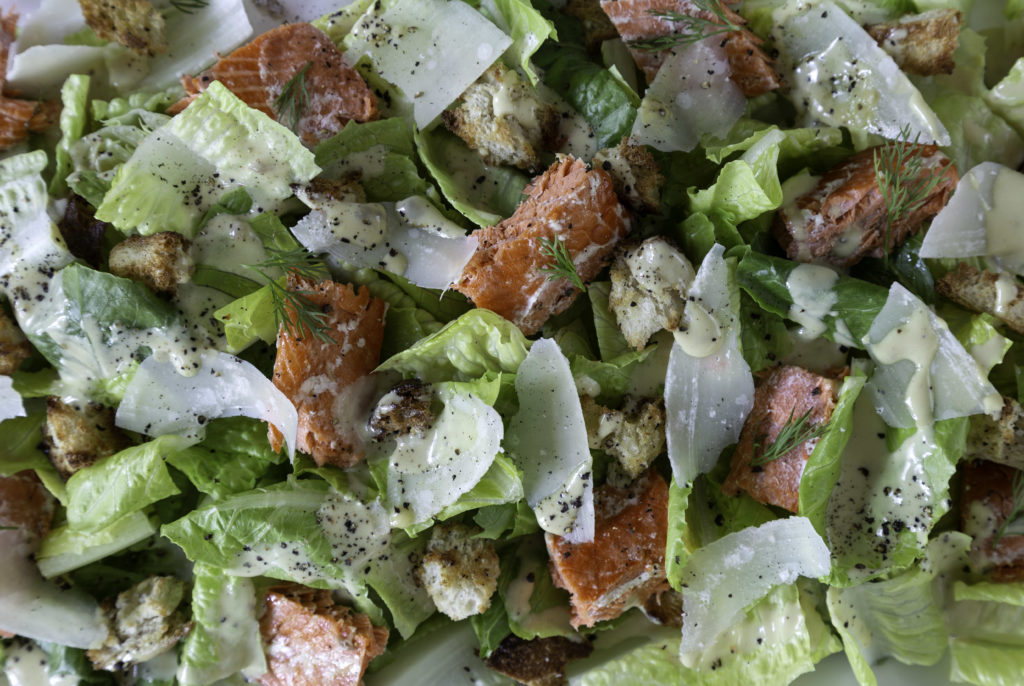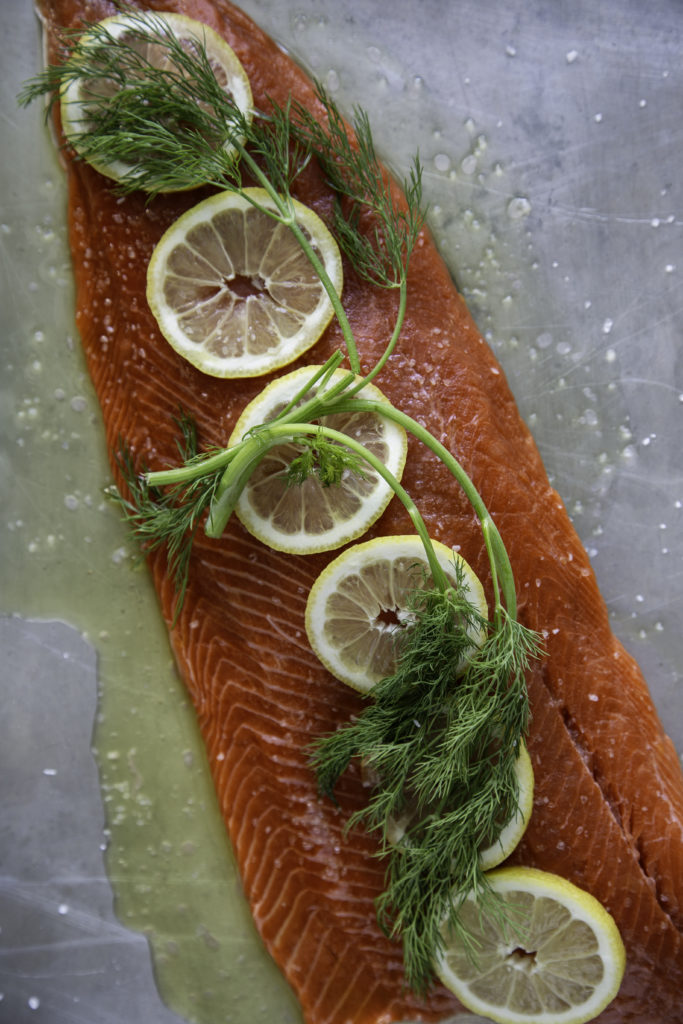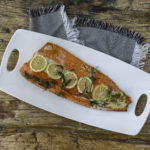Slow Roasted Salmon with Lemon and Dill
 Slow roasted salmon with lemon and dill is easy, fresh and fast. A low and slow temperature melts the fat in the salmon and makes the finished product super tender. Top it with herbed yogurt sauce or chermoula for a dish that’s simple enough for a weeknight meal and impressive enough for a dinner party.
Slow roasted salmon with lemon and dill is easy, fresh and fast. A low and slow temperature melts the fat in the salmon and makes the finished product super tender. Top it with herbed yogurt sauce or chermoula for a dish that’s simple enough for a weeknight meal and impressive enough for a dinner party.
Copper River Sockeye Salmon runs from May to July, so head to the market and grab some before they stop running. Coho salmon will be your next option, which runs from August to September. Buy a whole side of salmon, which looks impressive and is beautiful served on a rectangular white platter.
 If you can’t find wild sockeye salmon at your local grocer or fish monger, look for any type of wild salmon as a replacement. Filets will work just as well as a whole side, although individual filets will cook faster. Check them after 15-20 minutes, the internal temperature should reach 120 degrees.
If you can’t find wild sockeye salmon at your local grocer or fish monger, look for any type of wild salmon as a replacement. Filets will work just as well as a whole side, although individual filets will cook faster. Check them after 15-20 minutes, the internal temperature should reach 120 degrees.
To make the fish, first cover your sheetpan with foil or parchment paper to make clean up easier. Then drizzle extra virgin olive oil in the middle of the pan and lay the salmon, skin side down, on top of it. Top the fish with thin slices of lemon, 2-3 whole dill fronds and a sprinkle of kosher or Maldon sea salt. This salmon recipe cooks a little longer than my recipe for simple roasted salmon, but the final result is a silky piece of fish that’s full of bright and delicious.
Slow Roasted Salmon with Lemon and Dill
Ingredients
- 2 tablespoons extra virgin olive oil avocado oil is fine too
- 1 side of salmon I prefer wild salmon, look for King, Sockeye or Coho, will range from 2-3 pounds
- 2-3 dill fronds
- 1/2 lemon sliced thin
- 1 teaspoon kosher or Maldon sea salt
Instructions
- Preheat oven to 275 degrees.
- Line a sheetpan with foil or parchment paper.
- Drizzle the olive oil down the center of the pan and place the salmon, skin side down, on top of the olive oil.
- Place the lemon slices on top of the salmon and cover with dill fronds. Sprinkle with salt.
- Bake for 30 minutes, until the internal temperature reaches 120 degrees.


Leave a Reply